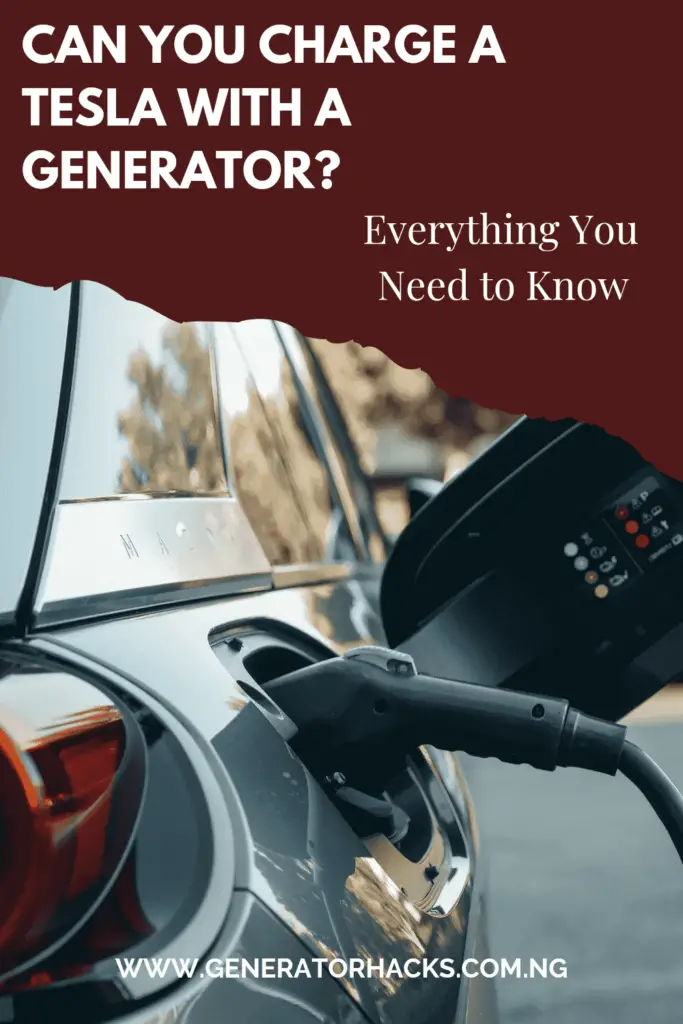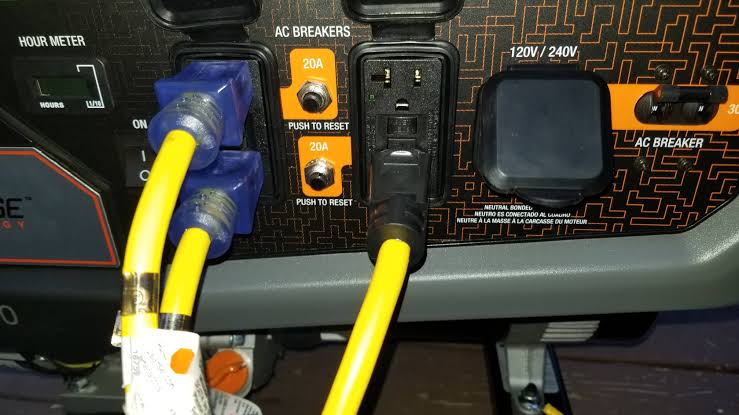As an Amazon Associate, we earn from qualifying purchases. This does not affect the price you pay or the quality of the products you buy. For more information, please read the full affiliate disclosure here.
Tesla is not just a car brand; it is a phenomenon. With its visionary founder, Elon Musk, Tesla has become a symbol of innovation, sustainability, and futuristic design.
Tesla cars are not only electric but also smart, autonomous, and powerful. They offer a unique driving experience that many people dream of.
But owning a Tesla also has its drawbacks. One of the main challenges that Tesla drivers face is how to charge their car when they are away from home or on a long journey.
Unlike conventional cars that can easily refuel at any gas station, Tesla cars need to find a compatible charging station or a power outlet to recharge their batteries.
This can be a problem if you are in a remote area or if you want to travel across the country without worrying about running out of juice.
Some Tesla owners may wonder if they can use a portable generator to charge their car and keep going without interruption.
But is this a viable option?
How does it work?
What are the advantages and disadvantages of using a generator to charge a Tesla?
In this blog post, we will explore these questions and give you all the information you need to know about charging your Tesla with a generator.
We will also share some tips and alternatives to make your Tesla adventure more fun and stress-free.
Let’s get started!
Can You Charge a Tesla with a Generator?
The short answer is yes; you can charge a Tesla with a generator. However, there are some important caveats and limitations that you need to be aware of before you try this method.

Can You Charge a Tesla With a Generator While Driving?
It is possible to charge a Tesla with a generator while driving, but it is not a recommended practice.
There are several reasons why this method is inefficient, impractical, and potentially harmful.
First of all, charging a Tesla with a generator while driving is very inefficient. A generator uses gasoline to produce electricity, which then charges the Tesla’s battery.
This process involves multiple conversions of energy, which result in significant losses. According to Business Insider, using a generator makes driving a Tesla more polluting than driving a conventional gas-powered car.
Secondly, charging a Tesla with a generator while driving is potentially harmful. The vibrations created by the generator can damage both the generator and the Tesla.
The generator can also overheat or catch fire if it is not properly ventilated. The Tesla can also reject charging if it detects an unstable power source or if the charging cable is plugged in while driving.
What we are trying to say is that charging a Tesla with a generator while driving is not advisable. It defeats the purpose of driving an electric vehicle, which is to reduce emissions and save energy. It also poses many risks and challenges that outweigh the benefits.
What Kind of Generator Do You Need to Charge Your Tesla?
First of all, not all generators are compatible with Tesla cars. You will need a generator that can produce a clean, unmodified sine wave, which is the type of alternating current (AC) that most household appliances use.
A clean sine wave is smooth and continuous, unlike other types of waves that have spikes or distortions that can damage your Tesla’s battery or electronics.
You will need a generator that can provide enough power to charge your Tesla at a reasonable speed.
The power output of a generator is measured in watts (W) or kilowatts (kW), which indicate how much electricity it can generate per hour.
The higher the wattage, the faster you can charge your Tesla. However, higher wattage also means higher fuel consumption and noise levels.
According to Tesla Thunder, you will need at least 1500W to charge a Tesla from a generator, but ideally more than 4000W for optimal results.
For comparison, the standard wall outlet in your home can provide up to 1800 W, while a typical Tesla Supercharger can provide up to 250 kW.
How to Connect a Generator to Your Tesla?
Grounding is essential for safety reasons, as it prevents electric shocks or fires from occurring due to faulty wiring or equipment.
You will need to properly ground your generator and connect it to your Tesla using the right adapter.
You can ground your generator by attaching a metal rod or wire to its frame and inserting it into the earth.
To connect your generator to your Tesla, you will need an adapter that matches the plug type of your generator and the charging port of your Tesla.
For example, if your generator has a NEMA 14-50 plug (which is common for RVs and campers), you will need a NEMA 14-50 adapter for your Tesla.
How to Charge a Tesla With a Generator
If you have the right generator, adapter, and grounding equipment, you can follow these steps to charge your Tesla with a generator:
- Set up your generator in a safe and stable location, away from any flammable materials or sources of ignition. Make sure there is enough ventilation and clearance around the generator to prevent overheating or carbon monoxide poisoning.
- Start your generator and let it warm up for a few minutes before plugging in your Tesla. This will ensure that the generator is running smoothly and producing stable power.
- Plug in your adapter to your generator’s outlet, and then plug in your Tesla’s charging cable to the adapter. Make sure the connections are secure and tight.
- On your Tesla’s dashboard monitor, set the charging amps to the lowest setting possible (usually 5 A). This will prevent overloading or damaging your generator or Tesla.
- Gradually increase the charging amps until you reach the maximum power output of your generator or the desired charging speed for your Tesla. Do not add amps too quickly or exceed the limits of your equipment.
- Monitor your Tesla’s battery level and charging status on your dashboard or mobile app. You can also check your generator’s fuel level and performance indicators.
- When you have enough charge to reach your destination or the nearest charging station, unplug your Tesla from the adapter, and then unplug the adapter from the generator. Turn off your generator and let it cool down before storing it away.
Pros and Cons of Charging a Tesla with a Generator
Charging a Tesla with a generator may seem like an easy and convenient solution for some situations, but it also has some drawbacks and disadvantages that you need to consider.
Here are some of the pros and cons of this method:
Pros
- It can provide you with an emergency backup option if you run out of battery in a remote area or during a power outage.
- It can extend your driving range and allow you to travel longer distances without stopping or relying on charging stations.
- It can give you more flexibility and freedom to explore off-the-grid locations or go camping with your Tesla.
Cons
- It can be expensive and inefficient to buy, maintain, and operate a generator. You will need to pay for the generator itself, the fuel, the adapter, and the grounding equipment. You will also need to regularly service and repair your generator to keep it in good condition.
- It can be slow and time-consuming to charge your Tesla with a generator. Depending on the power output of your generator and the battery capacity of your Tesla, it can take several hours or even days to fully charge your Tesla. For example, it can take more than 24 hours for a 4000-watt generator to fully charge a Tesla Model S.
- It can be noisy and polluting to use a generator. Generators can produce loud noises that can disturb you and others around you. They can also emit harmful gases and particles that can affect your health and the environment. Using a generator defeats the purpose of driving an electric car that is supposed to be clean and green.
- It can be risky and dangerous to charge your Tesla with a generator. If you do not follow the proper safety precautions and instructions, you can cause electric shocks, fires, explosions, or damage to your Tesla or generator. You can also void your Tesla’s warranty or insurance coverage if you use an unauthorized or incompatible generator or adapter.
Tips and Alternatives for Charging Your Tesla
As you can see, charging your Tesla with a generator is not the best or most practical way to power your electric car.
There are other tips and alternatives that you can use to make your Tesla driving experience more enjoyable and hassle-free.
Here are some of them:
- Plan your trips ahead and use Tesla’s navigation system or mobile app to find the nearest and most convenient charging stations along your route. You can also use third-party apps or websites that show other types of charging stations that are compatible with your Tesla.
- Use Tesla’s Superchargers or Destination Chargers whenever possible, as they offer the fastest and most reliable way to charge your Tesla. Superchargers can charge your Tesla up to 80% in about 30 minutes, while destination chargers can charge your Tesla up to 100% in about four hours.
- Use solar panels or home batteries to charge your Tesla at home or on the go. Solar panels can generate clean and renewable energy from the sun, while home batteries can store excess energy for later use. You can install solar panels on your roof, garage, or carport, or buy portable solar panels that you can take with you on your trips. You can also buy Tesla’s Powerwall, which is a home battery that integrates with your solar system and provides backup power during outages.
- Use regenerative braking to extend your battery life and driving range. Regenerative braking is a feature that allows your Tesla to recover some of the energy that is normally lost when braking. This energy is then used to recharge your battery and reduce your energy consumption. You can adjust the level of regenerative braking in your Tesla’s settings menu.
Final Thought
Charging a Tesla with a generator is possible but not recommended.
It has many limitations and disadvantages that outweigh its benefits.
It is better to use other methods and options that are faster, safer, cheaper, and greener.
If you have any comments or feedback, please feel free to share them below.
Share


